Abstract
The existing extensive laboratory data on trichloroethylene (TCE) and its two metabolites, dichloroacetic (DCA) and trichloroacetic (TCA), are used to explore the relationship among these three compounds. Under the hypothesis that these compounds induce liver tumors in mice through promotion of preexisting initiated cells, it is demonstrated that DCA alone could be responsible for all the response of carcinomas in liver of B6CF(1) mice. The focus of this paper is on how a plausible biological assumption could impact on low-dose risk estimates, rather than on the risk estimate per se. The findings suggest that low-dose risk estimates to humans would be overestimated unless the different background rates between mice and humans are properly accounted for.
Full text
PDF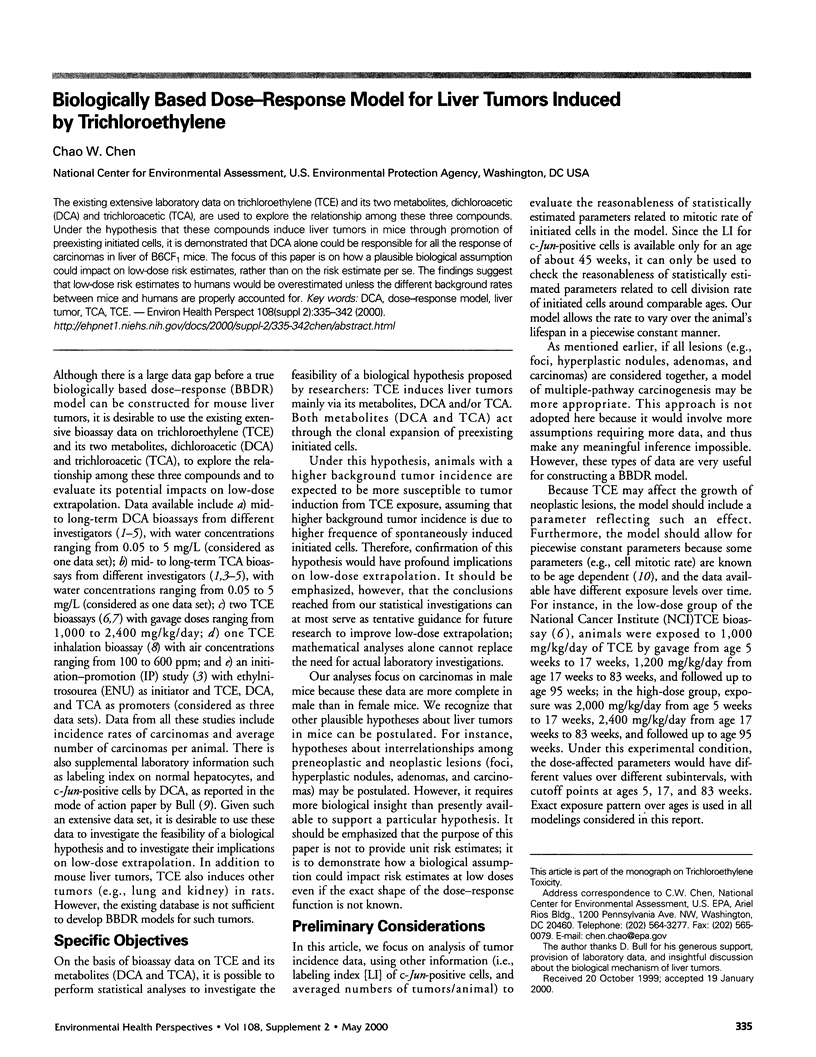
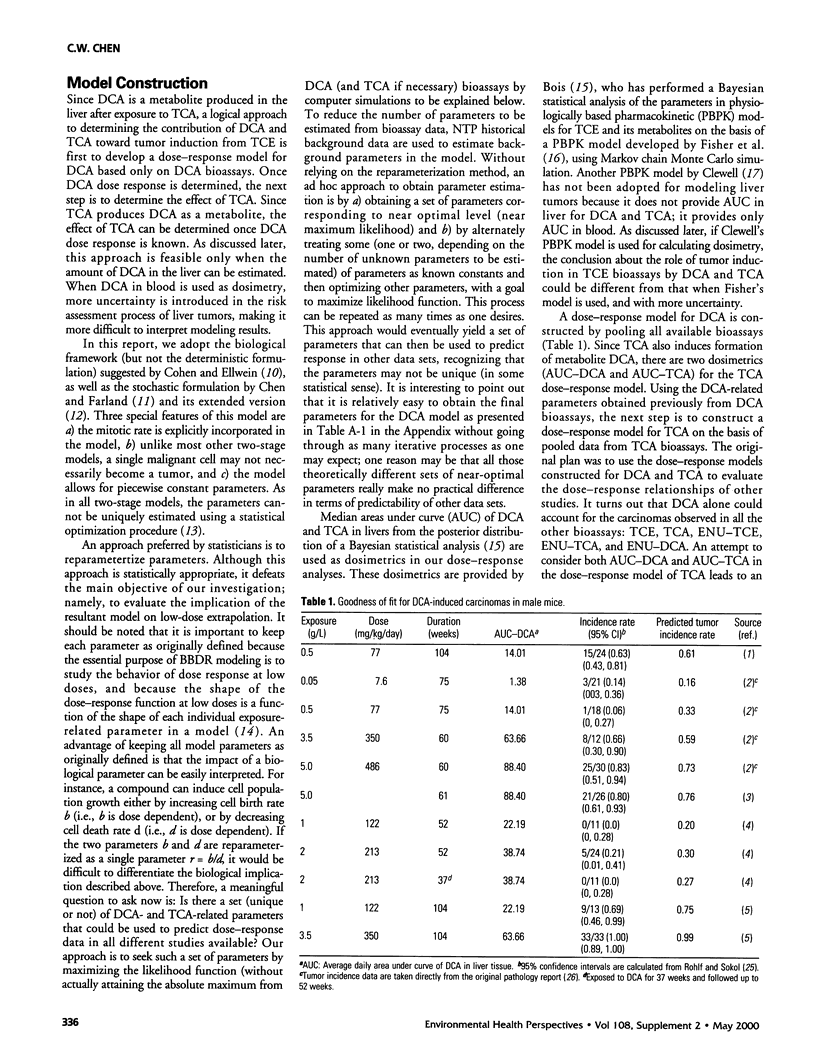

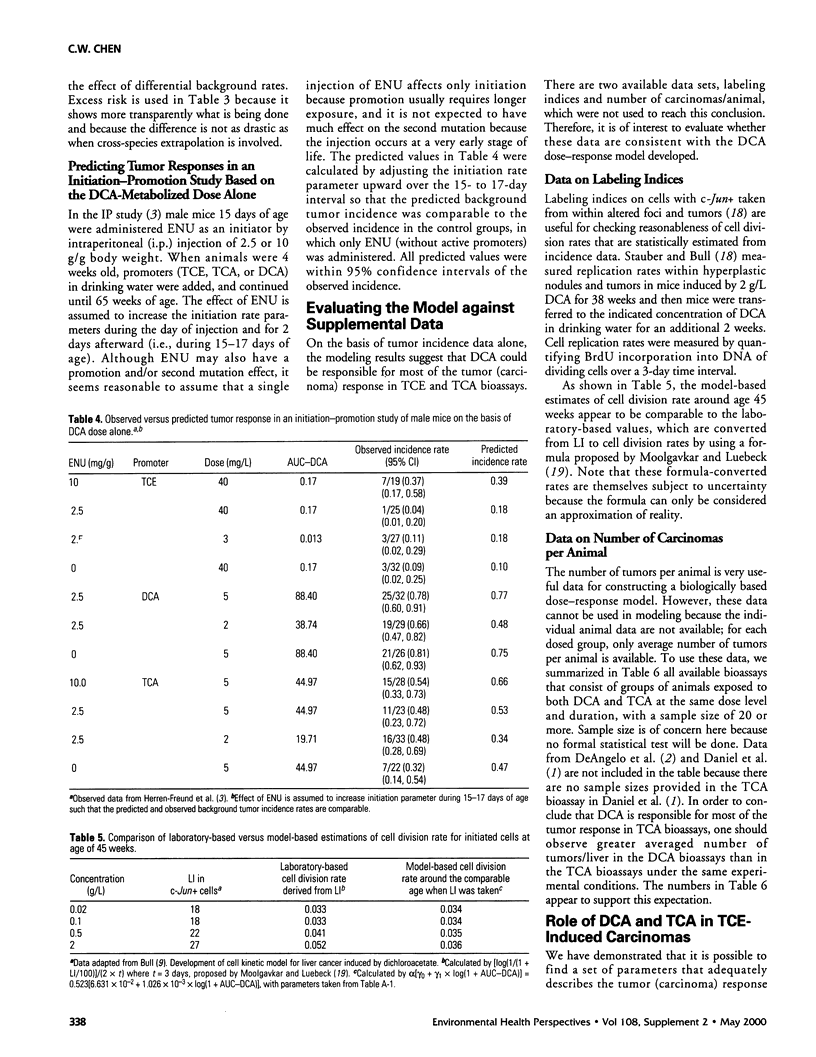
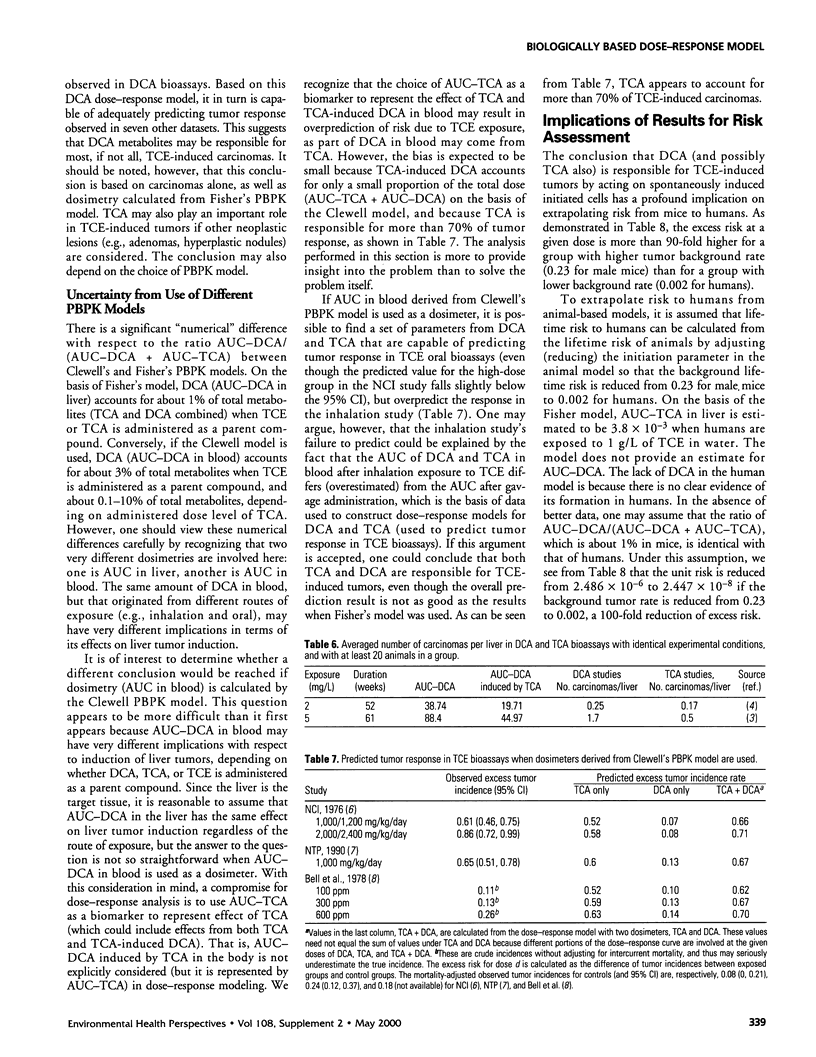
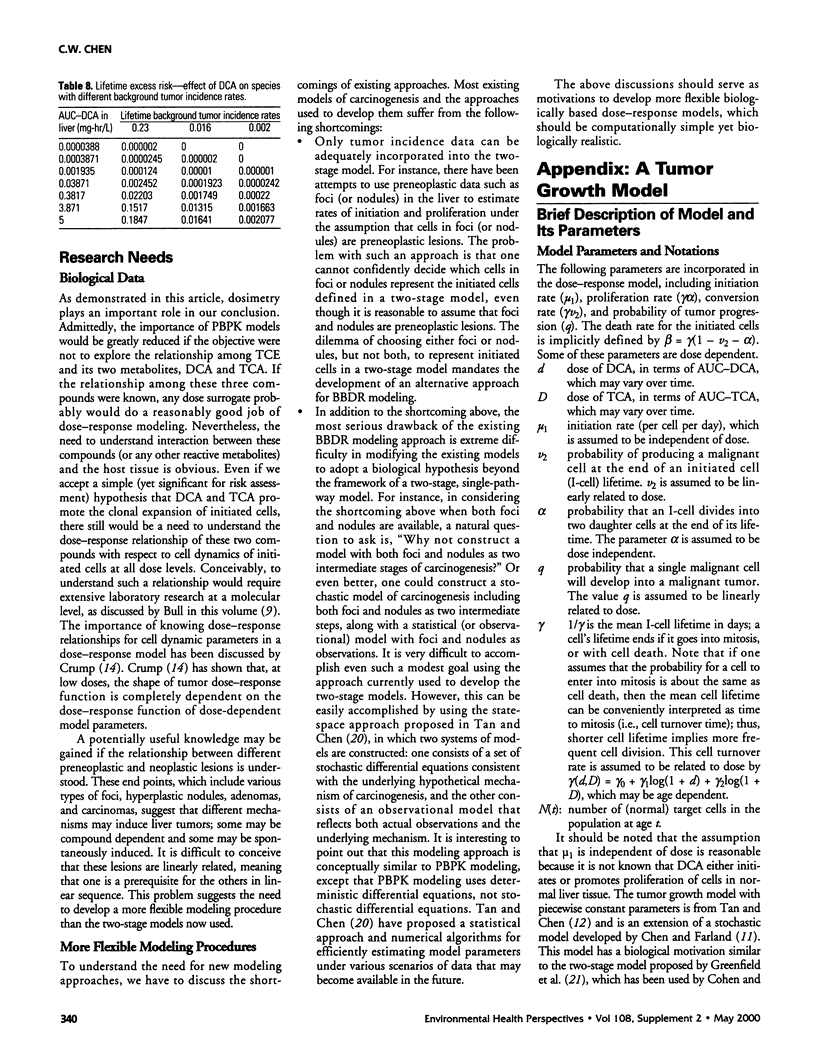
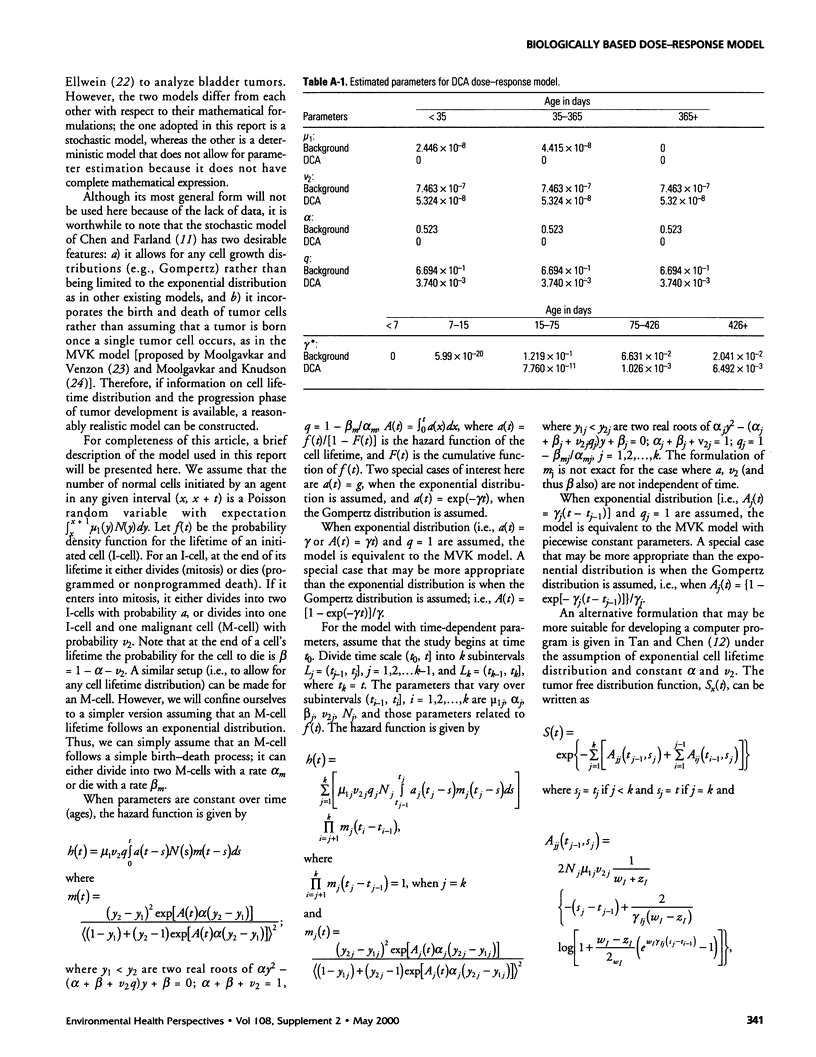
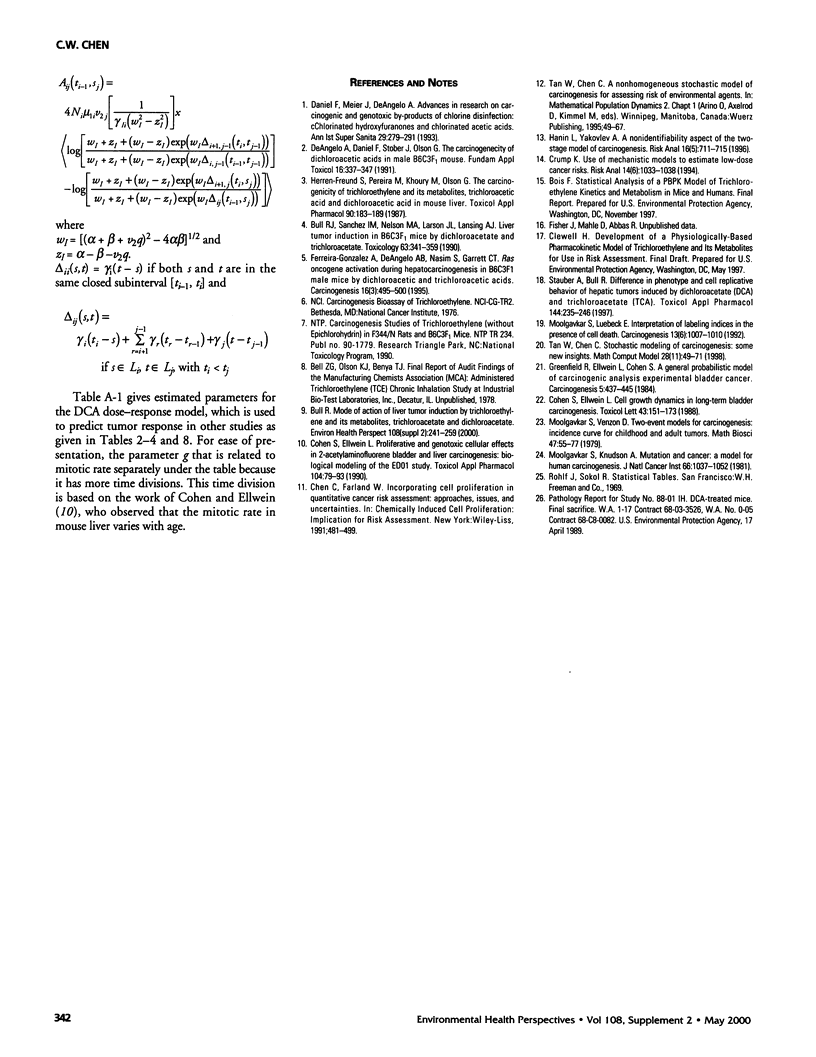
Selected References
These references are in PubMed. This may not be the complete list of references from this article.
- Bull R. J. Mode of action of liver tumor induction by trichloroethylene and its metabolites, trichloroacetate and dichloroacetate. Environ Health Perspect. 2000 May;108 (Suppl 2):241–259. doi: 10.1289/ehp.00108s2241. [DOI] [PMC free article] [PubMed] [Google Scholar]
- Bull R. J., Sanchez I. M., Nelson M. A., Larson J. L., Lansing A. J. Liver tumor induction in B6C3F1 mice by dichloroacetate and trichloroacetate. Toxicology. 1990 Sep;63(3):341–359. doi: 10.1016/0300-483x(90)90195-m. [DOI] [PubMed] [Google Scholar]
- Chen C., Farland W. Incorporating cell proliferation in quantitative cancer risk assessment: approaches, issues, and uncertainties. Prog Clin Biol Res. 1991;369:481–499. [PubMed] [Google Scholar]
- Cohen S. M., Ellwein L. B. Cell growth dynamics in long-term bladder carcinogenesis. Toxicol Lett. 1988 Oct;43(1-3):151–173. doi: 10.1016/0378-4274(88)90026-4. [DOI] [PubMed] [Google Scholar]
- Cohen S. M., Ellwein L. B. Proliferative and genotoxic cellular effects in 2-acetylaminofluorene bladder and liver carcinogenesis: biological modeling of the ED01 study. Toxicol Appl Pharmacol. 1990 Jun 1;104(1):79–93. doi: 10.1016/0041-008x(90)90284-2. [DOI] [PubMed] [Google Scholar]
- Crump K. S. Use of mechanistic models to estimate low-dose cancer risks. Risk Anal. 1994 Dec;14(6):1033–1038. doi: 10.1111/j.1539-6924.1994.tb00073.x. [DOI] [PubMed] [Google Scholar]
- Daniel F. B., Meier J. R., Deangelo A. B. Advances in research on carcinogenic and genotoxic by-products of chlorine disinfection: chlorinated hydroxyfuranones and chlorinated acetic acids. Ann Ist Super Sanita. 1993;29(2):279–291. [PubMed] [Google Scholar]
- DeAngelo A. B., Daniel F. B., Stober J. A., Olson G. R. The carcinogenicity of dichloroacetic acid in the male B6C3F1 mouse. Fundam Appl Toxicol. 1991 Feb;16(2):337–347. doi: 10.1016/0272-0590(91)90118-n. [DOI] [PubMed] [Google Scholar]
- Ferreira-Gonzalez A., DeAngelo A. B., Nasim S., Garrett C. T. Ras oncogene activation during hepatocarcinogenesis in B6C3F1 male mice by dichloroacetic and trichloroacetic acids. Carcinogenesis. 1995 Mar;16(3):495–500. doi: 10.1093/carcin/16.3.495. [DOI] [PubMed] [Google Scholar]
- Greenfield R. E., Ellwein L. B., Cohen S. M. A general probabilistic model of carcinogenesis: analysis of experimental urinary bladder cancer. Carcinogenesis. 1984 Apr;5(4):437–445. doi: 10.1093/carcin/5.4.437. [DOI] [PubMed] [Google Scholar]
- Hanin L. G., Yakovlev AYu A nonidentifiability aspect of the two-stage model of carcinogenesis. Risk Anal. 1996 Oct;16(5):711–715. doi: 10.1111/j.1539-6924.1996.tb00819.x. [DOI] [PubMed] [Google Scholar]
- Herren-Freund S. L., Pereira M. A., Khoury M. D., Olson G. The carcinogenicity of trichloroethylene and its metabolites, trichloroacetic acid and dichloroacetic acid, in mouse liver. Toxicol Appl Pharmacol. 1987 Sep 15;90(2):183–189. doi: 10.1016/0041-008x(87)90325-5. [DOI] [PubMed] [Google Scholar]
- Moolgavkar S. H., Knudson A. G., Jr Mutation and cancer: a model for human carcinogenesis. J Natl Cancer Inst. 1981 Jun;66(6):1037–1052. doi: 10.1093/jnci/66.6.1037. [DOI] [PubMed] [Google Scholar]
- Moolgavkar S. H., Luebeck E. G. Interpretation of labeling indices in the presence of cell death. Carcinogenesis. 1992 Jun;13(6):1007–1010. doi: 10.1093/carcin/13.6.1007. [DOI] [PubMed] [Google Scholar]


